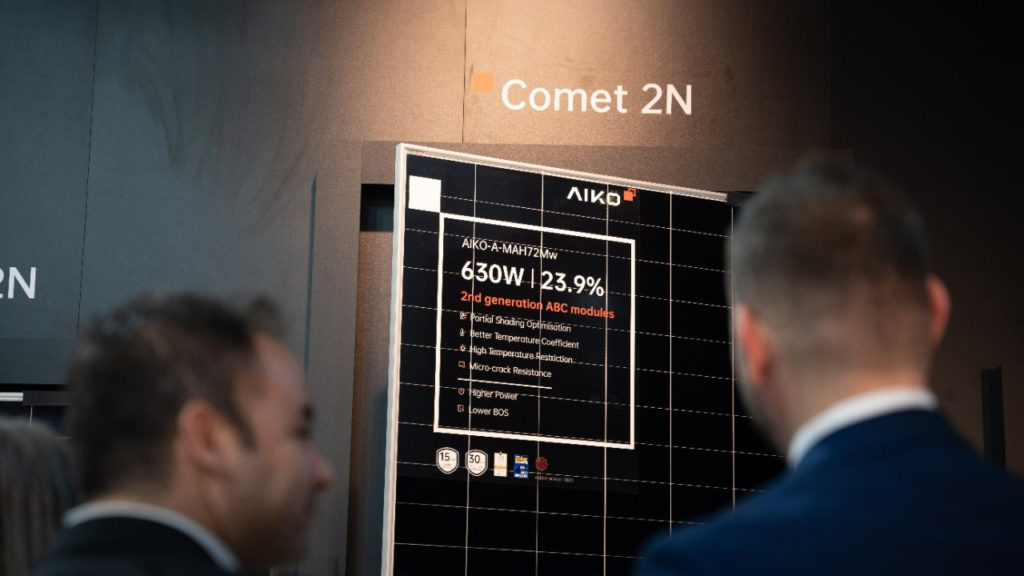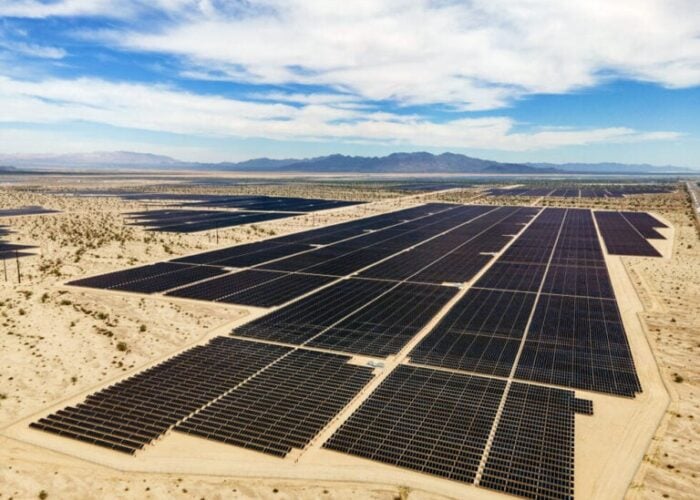
Chinese cell and module manufacturer Aiko Solar has launched new n-type all-back contact (ABC) modules aimed for use in residential and commercial and industrial (C&I) operations.
In an event in Italy, Aiko Solar launched the Comet series, a variation boasting the highest efficiency (23.9%). Aiko Solar said this series is applicable to C&I operations and is available in mono and dual-glass versions. Measuring 2323 millimetres by 1134 millimetres, this series comes at power ratings from 600-630W.
Try Premium for just $1
- Full premium access for the first month at only $1
- Converts to an annual rate after 30 days unless cancelled
- Cancel anytime during the trial period
Premium Benefits
- Expert industry analysis and interviews
- Digital access to PV Tech Power journal
- Exclusive event discounts
Or get the full Premium subscription right away
Or continue reading this article for free
The Neostar series features a power rating range of 440-470W, aiming to be used in residential applications. Boasting an efficiency ratio of 23.6%, the series offers mono and dual-glass versions and measures only 1757 millimetres by 1134 millimetres.
Additionally, the Stellar module series, announced in December 2023, is a large format (2382×1134 millimetres) bifacial product with power ratings from 620-640W, boasting efficiency of 23.7%. Aiko Solar said this series is intended to be used in utility scale power plants, including floating solar PV projects (FPV) with features such as water resistance encapsulation, anti-corrosion frames and waterproof caps.
Moreover, the new modules also feature a partial shading optimisation function which allows users to maximise energy production in shading conditions.
“(Technical advisory) TÜV Nord test shows that with only one solar cell fully shaded, our ABC modules can generate 30% more power compared to traditional technology,” said Christian Peter, managing director of SolarLab Aiko Europe.
The modules encompass a temperature coefficient of -0.26% per degree Celsius, in addition to a degradation rate of lower than 1% in the first year and an annual degradation rate of lower than 0.35% from the second year onwards.






